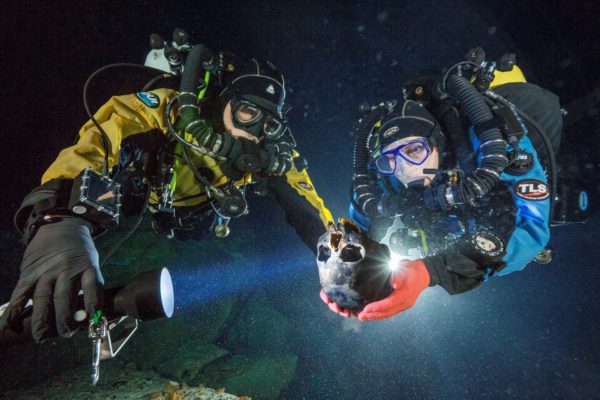
Ryan Roberts
Staff Writer
An underwater cave in the Yucatán Peninsula held the remains of the oldest, most complete human remains found in the Americas, which has answered questions regarding the migration of ancient humans to the Americas.
The 13,000-year-old remains of a teenage girl, nicknamed “Naia”, after the water nymphs from Greek mythology, were located under water in the 140 foot deep cave. Recovered by divers, it is one of the most complete human skeletons found in the Americas, as it includes an intact cranium, most ribs, vertebrae and all the limbs. Scientists were able to date the bones by analyzing calcite crystals, which had been deposited on the girl’s bones.
It is speculated that the teenage girl fell to her death in the cave before it was underwater, during the last ice age. Her body was later conserved in the water without being disturbed. This preserved genetic material, which could be acquired. After DNA was extracted from one of Naia’s teeth, it was found to match that of modern day Native Americans, strengthening the idea that the first American people came from Asia via the no longer existing land bridge known as Beringia, which existed between what is now known as Alaska and Russia.
The compelling link between the first Paleoamerican settlers and Native Americans suggests that most physical differences between populations are not due to different populations from Europe and Asia as has been hypothesized, populating the Americas, but rather natural changes due to environmental differences.
Adam Waldo, a former L&C student who has worked in research and the field at Mississippian Indian sites, argues, “Possibly the stark cultural and physical differences between the various native ethnicities of the Americas are derived simply by them having had carried their genes and defended their culture for the thousands of miles and tens of thousands of years we speak of. Regardless this is another hit to the previously held notion that the continent was young and virgin of humanity. Kennewick man as old as 10,000 years was the standing titleholder of “furthest South” and he was exhumed in Washington State. If this young girl was settled in the remote Yucatan 13,000 years ago, there will be older remains found, and far further south.”
The cave was discovered accidently in 2007 by cartographer by cave diver Alberto Nava and his two friends, Alejandro Alvarez and Franco Attolini while mapping underwater cave passages, which is part of 100,000 feet of underwater cave passageways on the peninsula.
The cave named Hoyo Negro, which means Black Hole in Spanish, contained more than just the remains of Naia, including extinct animals such as saber-toothed cats, giant ground sloths and gomphotheres.
The scientists and divers who worked to unearth Naia have been working to preserve the site, as there is much that can still be added to the fields of paleoanthropology.
For more information about the human skeleton found visit america.aljazeera.com.



